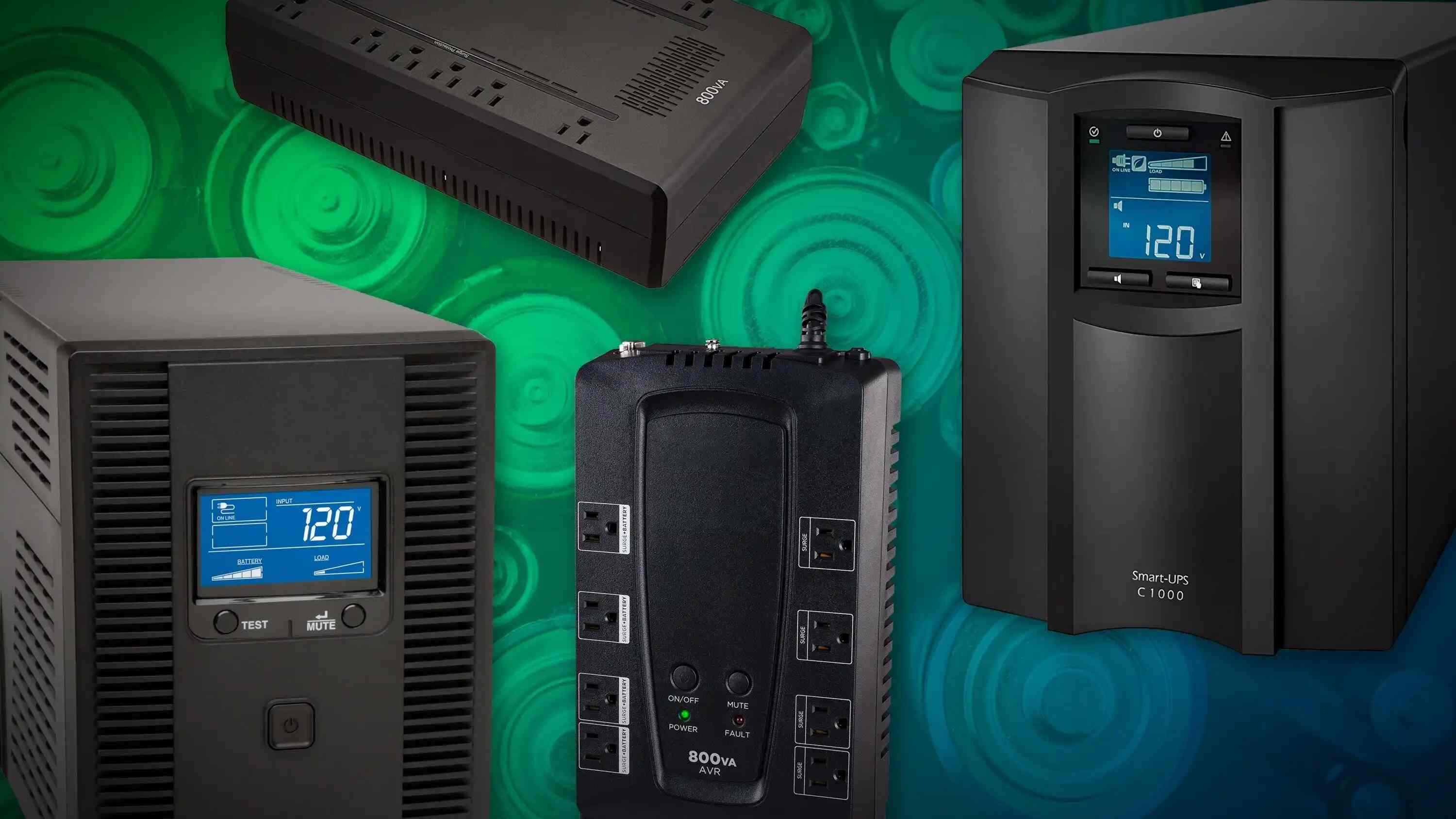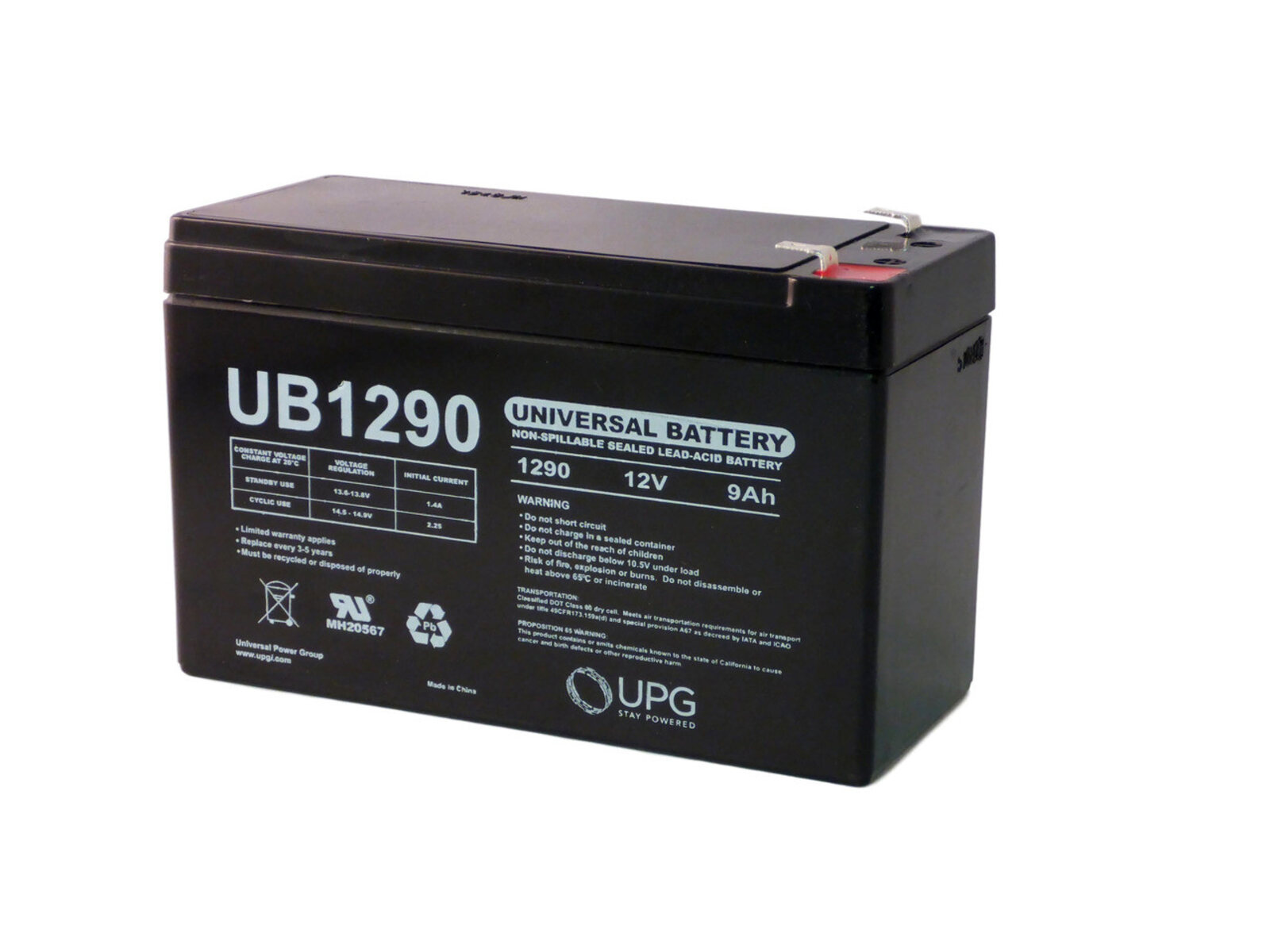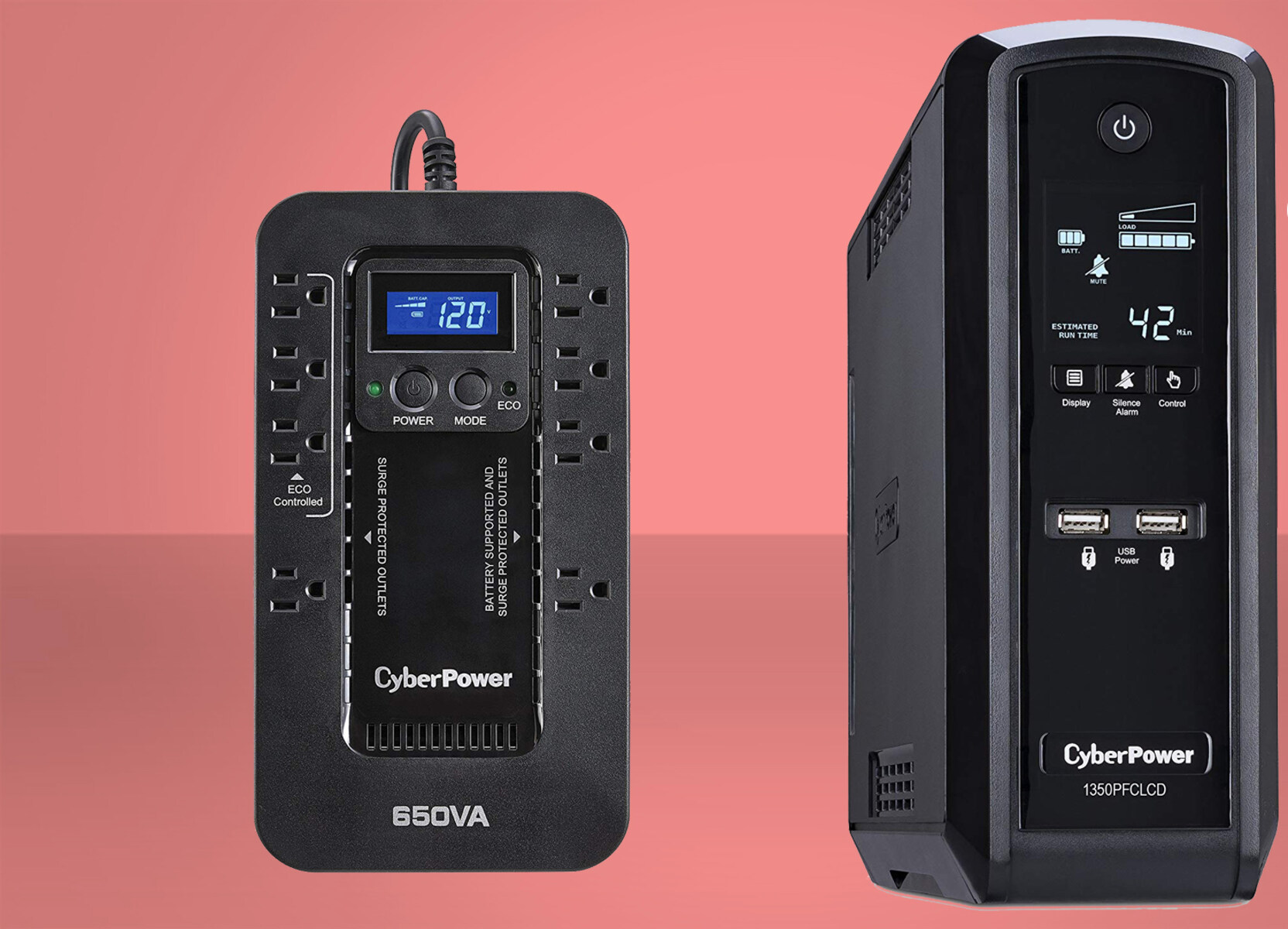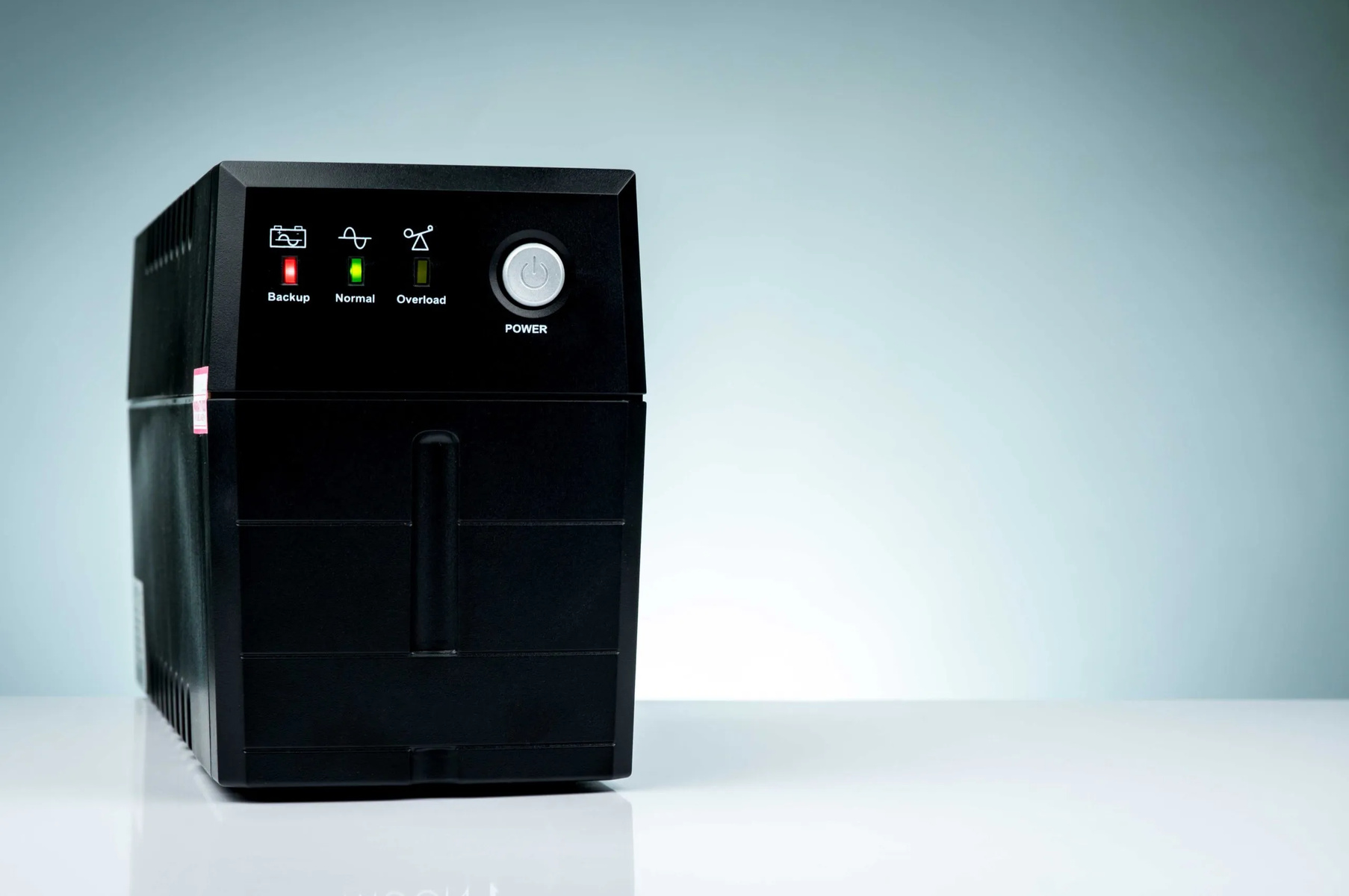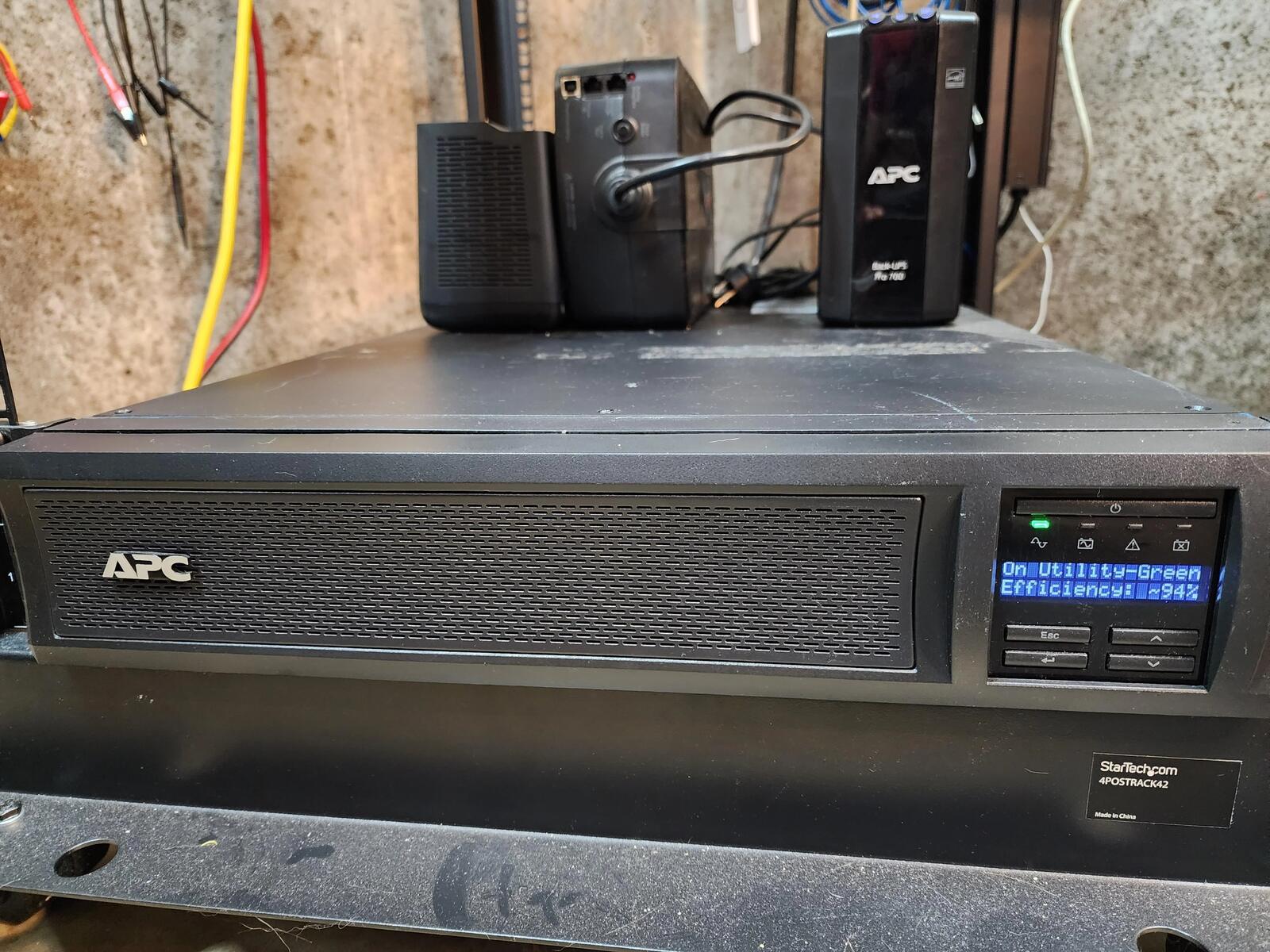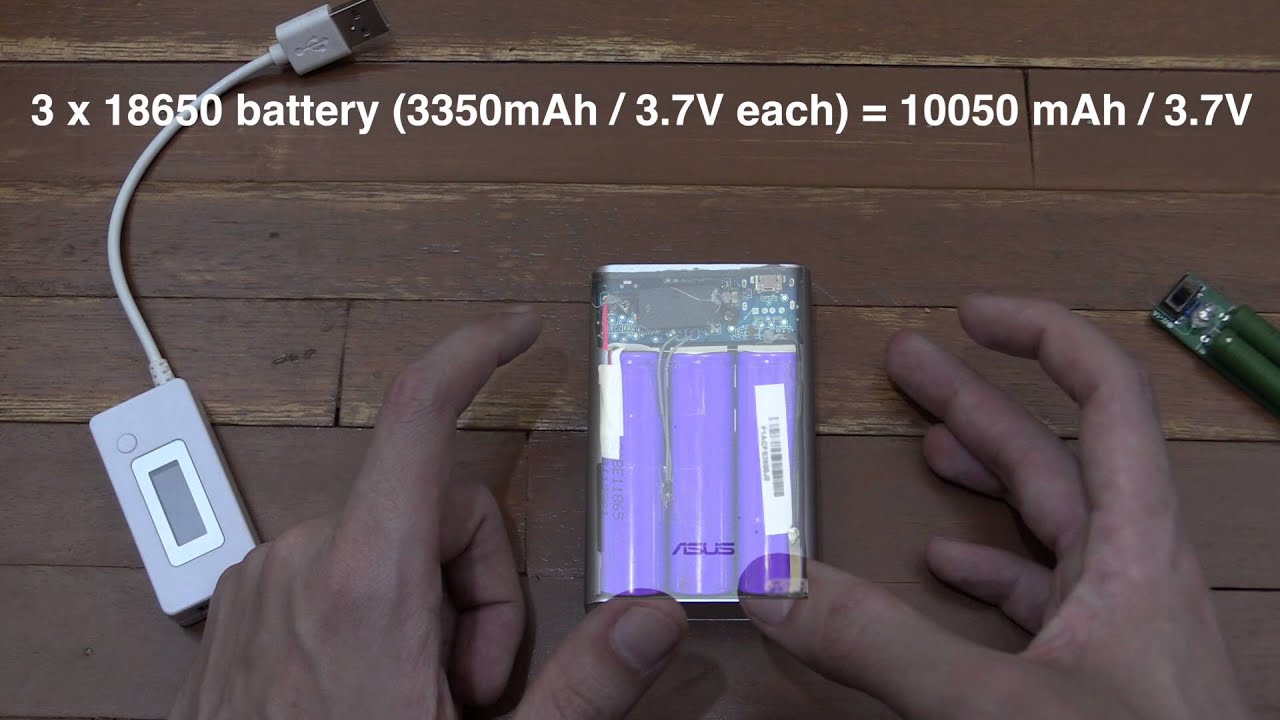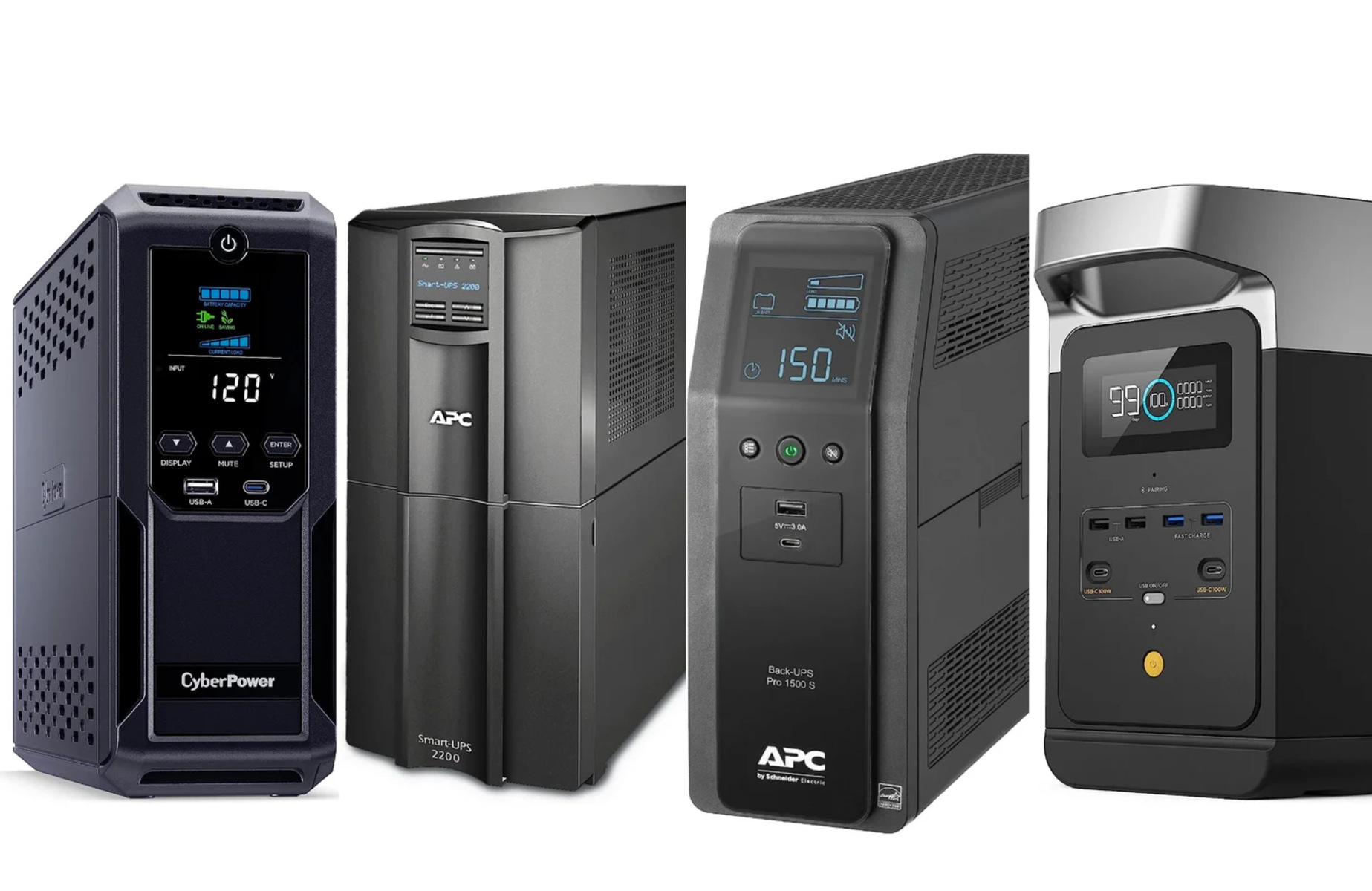Introduction
Welcome to our guide on how to calculate a UPS battery backup. In today’s digital age, where our lives are heavily reliant on electronic devices, it’s essential to have a backup power solution in place to safeguard against unexpected power outages. Uninterruptible Power Supply (UPS) systems equipped with battery backups offer an effective solution to keep your devices powered during such instances.
Whether you’re protecting your home office equipment, critical business infrastructure, or sensitive data centers, understanding how to calculate the required capacity for a UPS battery backup is crucial. By following the right steps and considering various factors, you can ensure you have the necessary backup power to keep your devices running smoothly during power interruptions.
In this guide, we will walk you through the step-by-step process of calculating the UPS battery backup capacity. We will cover important factors to consider, such as the power consumption of your devices, battery capacity, runtime, efficiency, battery technology, and charging time. By considering these factors, you can accurately determine the optimal UPS battery backup system for your specific needs.
It’s important to note that while the calculations provided in this guide will give you a good estimate of the required UPS battery backup capacity, it’s always recommended to consult with a professional or refer to the manufacturer’s specifications for precise calculations. These professionals have the expertise and knowledge to guide you in selecting the most suitable UPS system for your unique requirements.
Now, let’s delve into the fundamentals and calculations necessary to determine the right UPS battery backup capacity for your devices.
Understanding UPS Battery Backup
Before diving into the calculation process, it’s important to have a clear understanding of what a UPS battery backup is and how it works. A UPS system acts as a bridge between your electronic devices and the main power supply, providing temporary power when there is a disruption in the electrical supply.
A UPS consists of two key components: the power inverter and the battery. The power inverter converts the incoming AC power from the electrical outlet into DC power to charge the battery. During a power outage, the UPS switches to battery mode, converting the stored DC power back into AC power to keep your devices running.
UPS systems come in various sizes and capacities, allowing you to choose one that suits your specific needs. The capacity of a UPS battery backup is typically measured in volt-amperes (VA) or kilovolt-amperes (kVA), which indicates the maximum load it can handle. It’s crucial to select a UPS system with a capacity that meets or exceeds the power requirements of your devices to ensure proper functionality.
There are two main types of UPS systems: standby and online. Standby UPS systems are commonly used for home and small office applications. They remain in standby mode until a power interruption occurs, at which point they switch to battery mode. Online UPS systems, on the other hand, provide continuous power through the battery, offering superior protection against power fluctuations and surges.
UPS battery backups also offer additional benefits, such as surge protection and voltage regulation. They shield your devices from power spikes and fluctuations that can damage sensitive components. Additionally, some UPS systems provide power conditioning features to ensure a stable and clean power supply to your devices, reducing the risk of data loss and hardware damage.
Now that you have a basic understanding of UPS battery backups and their functionality, let’s move on to the factors you need to consider to accurately calculate the required capacity for your specific setup.
Factors to Consider
Calculating the UPS battery backup capacity involves taking several important factors into account. Consider the following factors to ensure you select the right UPS system for your power requirements:
- Power Consumption: Determine the power consumption of your devices, including the maximum wattage or amperage they require during operation.
- Total Power Requirement: Calculate the total power requirement by summing up the power consumption of all the devices you plan to connect to the UPS.
- Battery Capacity: Select a UPS system with a battery capacity that can handle the total power requirement of your devices.
- Runtime: Assess the runtime, which is the duration for which the UPS can provide power to your devices without being recharged. Consider the criticality of your devices and the frequency and duration of power outages in your area to determine the desired runtime.
- Efficiency: Take into account the efficiency of the UPS system, as it affects the amount of power the UPS consumes while charging the battery and providing power to your devices. Higher efficiency translates to less power consumption and longer runtime.
- Battery Technology: Consider the type of battery technology used in the UPS system, such as valve-regulated lead-acid (VRLA) or lithium-ion. Each technology has its own advantages and disadvantages in terms of cost, lifespan, and performance.
- Charging Time: Determine the time required to fully recharge the UPS battery after it has been depleted. This is important to ensure that the UPS is ready for the next power outage.
By considering these factors, you can make an informed decision and calculate the appropriate UPS battery backup capacity for your specific needs. In the following sections, we will go through each step in detail to help you calculate the required capacity accurately.
Step 1: Determine the Power Consumption of Your Devices
The first step in calculating the UPS battery backup capacity is to determine the power consumption of your devices. This involves identifying the maximum wattage or amperage that each device requires when in operation. This information can usually be found on the device itself, the user manual, or the manufacturer’s website.
To determine the power consumption of your devices, you can use a watt meter or a power monitoring device. These tools allow you to measure the power consumption of each device accurately. Simply connect the device to the watt meter or power monitoring device, and it will display the power usage in watts or amps.
If you don’t have access to a watt meter, you can also check the labels or nameplates on your devices. Many electronic devices provide information about their power requirements, including voltage, current, and power consumption. Look for labels that mention terms like “watts,” “Amps,” or “VA.”
Make a list of all the devices you plan to connect to the UPS system and their respective power consumptions. Note down the highest power consumption for each device. It’s important to include all devices that you want to protect during a power outage, including computers, monitors, routers, modems, printers, and any other essential equipment.
Once you have the power consumption values for each device, it’s a good practice to add a safety margin of around 20-30% to account for any power spikes or future device additions. This ensures that your UPS system can handle unexpected power surges and future expansion of your device setup.
With the power consumption values and safety margin in hand, you are ready to move on to the next step: calculating the total power requirement for your UPS battery backup.
Step 2: Calculate the Total Power Requirement
After determining the power consumption of each device, the next step is to calculate the total power requirement for your UPS battery backup. This involves summing up the power consumption of all the devices that will be connected to the UPS system.
To calculate the total power requirement, add up the power consumption values for each device. If you have the values in watts, simply add them together. If you have the values in amps, multiply the amps by the voltage of your electrical system (usually 120V for residential settings) to convert them to watts, and then add them together.
For example, if you have a computer that consumes 300W, a monitor that consumes 50W, a router that consumes 20W, and a printer that consumes 100W, the total power requirement would be 470W (300W + 50W + 20W + 100W).
It’s important to note that the total power requirement should not exceed the VA or kVA rating of the UPS system you are considering. The VA rating indicates the maximum load capacity of the UPS, so it’s crucial to select a UPS system that can handle the total power requirement of your devices.
By accurately calculating the total power requirement, you ensure that your UPS battery backup system can provide sufficient power to keep your devices running during a power outage. It’s also a good idea to leave some headroom in the UPS capacity to allow for future additions or power spikes.
Now that you have determined the total power requirement, you are ready to move on to the next step: selecting the battery capacity for your UPS system.
Step 3: Selecting the Battery Capacity
Once you have calculated the total power requirement for your UPS battery backup, it is time to select the appropriate battery capacity. The battery capacity determines the amount of power the UPS can supply during a power outage.
To select the battery capacity, look for a UPS system that has a VA or kVA rating that is equal to or greater than the total power requirement you calculated in the previous step. It is important to choose a UPS system with a sufficient battery capacity to ensure that your devices receive uninterrupted power.
Keep in mind that the battery capacity and the runtime are closely related. The battery capacity determines how long the UPS can provide power to your devices, while the runtime defines the duration for which the UPS can operate without being recharged.
A rule of thumb for selecting the battery capacity is to aim for a runtime that covers the duration of most power outages you expect to experience. If power outages in your area typically last for a few minutes, a UPS with a smaller battery capacity may be sufficient. However, if longer outages are common, you will need a UPS with a larger battery capacity to maintain power for a longer duration.
It’s worth noting that battery capacity is measured in Ampere-hours (Ah) or Watt-hours (Wh). The higher the capacity, the longer the runtime the UPS will provide. However, keep in mind that increasing the battery capacity will also increase the physical size and weight of the UPS system.
When selecting the battery capacity, consider the specific needs of your devices and how critical they are. For example, if you are protecting sensitive equipment or important data, you might want to opt for a larger battery capacity to ensure extended runtime and uninterrupted operation.
With the proper battery capacity selected, you are now ready to move on to the next step: taking into account the desired runtime for your UPS system.
Step 4: Taking into Account the Runtime
After selecting the battery capacity for your UPS system, the next step is to determine the desired runtime. The runtime refers to the duration for which the UPS can power your devices without being recharged.
To calculate the runtime, you need to consider factors such as the criticality of your devices, the frequency and duration of power outages in your area, and any specific requirements you may have.
If your devices are not critical and you experience short power outages, a shorter runtime may be sufficient. However, if the devices are essential for your work or if you frequently experience longer power outages, you will need a UPS system with a longer runtime.
The runtime of a UPS system depends on the battery capacity, the power consumption of your devices, and the efficiency of the UPS. To estimate the runtime, divide the battery capacity in watt-hours (Wh) by the total power consumption of your devices in watts.
For example, if you have a UPS with a battery capacity of 1000Wh and the total power consumption of your devices is 500W, the estimated runtime would be 2 hours (1000Wh ÷ 500W = 2 hours).
It’s important to note that the actual runtime may vary depending on factors such as the age and condition of the battery, the load on the UPS, and environmental conditions.
When calculating the runtime, consider any additional power requirements or future additions you may have. It’s always recommended to have a buffer and select a UPS system with a slightly longer runtime than what you anticipate needing.
By determining the desired runtime for your UPS system, you can ensure that your devices will have reliable backup power during outages, giving you enough time to save your work and safely shut down your equipment if necessary.
With the runtime accounted for, you are now ready to move on to the next step: assessing the efficiency of the UPS system.
Step 5: Assessing the Efficiency of the UPS System
When calculating the UPS battery backup capacity, it is crucial to consider the efficiency of the UPS system. The efficiency of a UPS refers to how effectively it converts the incoming AC power into DC power to charge the battery, and then converts that stored DC power back into AC power to supply your devices.
The efficiency of UPS systems can vary based on factors such as design, technology, and load. It is typically expressed as a percentage and indicates the amount of power lost during the conversion process.
To assess the efficiency of a UPS system, look for its efficiency rating, which is usually provided by the manufacturer. Higher efficiency ratings indicate that the UPS system consumes less power, resulting in longer runtime and reduced energy costs.
In your calculation, you can consider the efficiency as a correction factor by dividing the total power requirement by the UPS system’s efficiency percentage. This will give you a more accurate representation of the actual power needed to run your devices.
For example, if your total power requirement is 1000W, and the UPS system has an efficiency rating of 90%, dividing the total power requirement by 0.90 (or multiplying by 1.11) will give you the corrected power requirement of approximately 1111W.
By considering the efficiency, you ensure your UPS system can handle the actual power consumption of your devices while accounting for any power loss during the conversion process.
It’s important to note that the efficiency of a UPS system can vary depending on the load it is running at. Some UPS systems have higher efficiency at full load, while others may perform better at lower loads. Consider the expected load of your devices during operation and choose a UPS system that offers optimal efficiency for that range.
With the efficiency of the UPS system accounted for, you can move on to the next step: considering the battery technology used in the UPS.
Step 6: Considering the Battery Technology
When calculating the UPS battery backup capacity, it’s important to consider the type of battery technology used in the UPS system. The battery technology plays a crucial role in the performance, lifespan, and reliability of the UPS system.
There are several battery technologies commonly used in UPS systems, but the two main types are valve-regulated lead-acid (VRLA) batteries and lithium-ion batteries.
VRLA batteries are the traditional choice for UPS systems. They are reliable, cost-effective, and require minimal maintenance. VRLA batteries come in two variations: absorbent glass mat (AGM) and gel. AGM batteries offer higher power density and faster recharge times, making them suitable for UPS applications. Gel batteries have a longer lifespan and better resistance to high temperatures, making them ideal for harsh environments.
Lithium-ion batteries, on the other hand, are becoming increasingly popular in UPS systems. They offer several advantages over VRLA batteries, including higher energy density, longer lifespan, faster recharge times, and lighter weight. Lithium-ion batteries are also more resilient to deep discharge cycles and have a lower self-discharge rate, making them a reliable choice for critical applications.
When selecting a UPS system, consider the specific requirements and preferences of your setup. Assess factors such as the desired lifespan, the need for quick recharging, the weight restrictions, and the operating environment. Consult with the manufacturer or a UPS specialist to determine which battery technology is most suitable for your needs.
While lithium-ion batteries generally offer superior performance, they tend to have a higher upfront cost compared to VRLA batteries. However, considering their longer lifespan and reduced maintenance requirements, they may provide a more cost-effective solution in the long run.
It’s also worth mentioning that advancements in battery technology continue to emerge. Keep an eye on the market for any new developments that may offer even better performance or cost benefits for your UPS system.
By considering the battery technology, you can select a UPS system that aligns with your specific requirements, ensuring reliable and efficient power backup for your devices.
Now that you have considered the battery technology, let’s move on to the next step: determining the charging time of the UPS system.
Step 7: Determining the Charging Time
After considering the battery technology for your UPS system, the next step is to determine the charging time. The charging time refers to the duration it takes for the UPS battery to recharge from a depleted state to a full charge after a power outage.
The charging time of a UPS system depends on various factors, including the battery capacity, the efficiency of the UPS, and the charging technology employed. In general, larger battery capacities and higher efficiencies result in longer charging times.
To determine the charging time, refer to the manufacturer’s specifications or consult with a UPS specialist. The manufacturer usually provides an estimated charging time for their UPS systems based on the battery capacity.
It’s important to keep in mind that the charging time can vary depending on the current load on the UPS system. Higher loads with multiple devices connected may result in longer charging times. Additionally, charging times can be affected by environmental factors such as temperature and humidity.
Consider the charging time when planning your power management strategy. If you frequently experience power outages or have critical devices that require immediate uptime, a UPS with faster charging times may be advantageous. On the other hand, if you have longer periods between power outages or can afford longer downtime, charging time may not be as critical.
Knowing the charging time of your UPS system is essential for proper maintenance and ensuring that the battery is fully charged and ready for the next power outage. Regularly check the charging time and schedule maintenance accordingly to maintain optimal performance and prolong the lifespan of the battery.
By determining the charging time, you can effectively plan for reliable power backup and ensure that your UPS system is always prepared for unforeseen power interruptions.
With the charging time considered, we are ready to move on to the final step: validating your calculations to ensure accuracy.
Step 8: Validating Your Calculation
After going through the previous steps to calculate the UPS battery backup capacity, it is important to validate your calculations to ensure their accuracy. Validating your calculation will give you confidence in your selection and help you avoid any potential issues or challenges in the future.
To validate your calculation, there are a few steps you can take:
- Consult with a Professional: Reach out to a UPS specialist or an expert in the field to review your calculations. They can provide valuable insights and offer guidance based on your specific requirements.
- Refer to Manufacturer’s Specifications: Double-check the specifications provided by the manufacturer for the UPS system you have selected. Ensure that the UPS system’s capacity, battery technology, charging time, and other parameters align with your calculations.
- Consider Real-World Factors: Take into account real-world factors such as temperature variations, load fluctuations, and any unique circumstances in your environment that may affect the performance of the UPS system. Adjust your calculations if necessary.
- Test the UPS System: Once you have the UPS system installed, perform a test to simulate a power outage and monitor how the UPS system performs. Verify that the runtime and functionality meets your expectations and assess if any adjustments to your calculation are required.
By taking these steps to validate your calculation, you can ensure that your UPS system is properly sized and capable of providing reliable backup power to your devices during power outages. It’s crucial to have confidence in your UPS system’s performance and its ability to meet your specific needs.
Remember, UPS systems are not a one-size-fits-all solution, and accurate calculations are essential for optimal performance and protection. Although the steps outlined in this guide provide a good starting point, it’s always recommended to seek professional advice or consult the manufacturer if you have any doubts or unique requirements.
By validating your calculation, you can confidently rely on your UPS system for backup power, ensuring uninterrupted operation and protecting your valuable devices and data.
Conclusion
Calculating the UPS battery backup capacity is essential for ensuring uninterrupted power to your devices during unexpected outages. By following the step-by-step process outlined in this guide, you can accurately determine the capacity required for your specific needs.
Understanding the fundamentals of UPS battery backups, considering factors such as power consumption, total power requirement, battery capacity, runtime, efficiency, battery technology, and charging time, will help you make informed decisions when selecting a UPS system.
It’s crucial to take into account the unique requirements of your setup and consult with professionals or refer to manufacturer specifications to validate your calculations. This validation process ensures that your selected UPS system can handle the power demands of your devices and provide reliable backup power during outages.
Remember to consider the efficiency and battery technology of the UPS system, as these factors can greatly impact the performance and lifespan of the battery. Additionally, determining the charging time of the UPS will help you plan for maintenance and ensure the battery is fully charged for subsequent outages.
By validating your calculations and conducting tests, you can have confidence in the selection and performance of your UPS system. Regular maintenance, monitoring, and adjustments as needed will ensure that your UPS and devices remain protected and operational.
With your UPS battery backup capacity properly calculated and implemented, you can have peace of mind knowing that your devices are safeguarded against power interruptions and that you can continue working, without interruption, even during unforeseen power outages.







